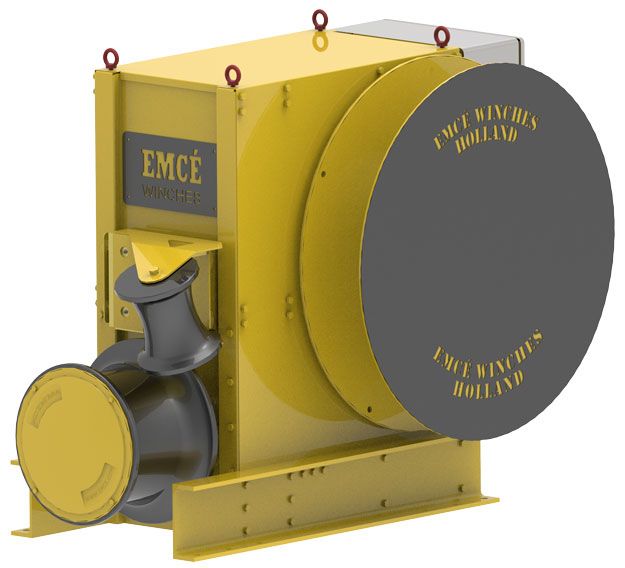Innovative new power cable winch from EMCÉ
The new EMCÉ Pull-In winch is displayed for the first time in public during the Offshore Energy 2017 in Amsterdam. With the renewable energy transition gaining momentum the number of wind turbines is increasing weekly, and installing them gave rise to an almost separate new industry. Installation equipment and procedures evolved together with the turbines themselves in an on-going process, but for some reason the manner in which power cables are pulled up to nacelle height seems to have largely escaped this process.
A tripod with a sheave, a small horizontal capstan winch and a competent, and often brave, team of operators are usually the chief ingredients to get the job done. To increase cable installation speed and safety EMCÉ developed a task-dedicated winch. With a nominal line pull of 8 tonne and weighing around 820 kg, the winch has an excellent power to weight ratio, while four lifting eyes and two integrated transporting wheels make the 1600 x 900 x 1300 mm unit highly mobile both on a platform as trough the air. The winch consists of a horizontal warping head on the front of the unit, and a storage drum on the side. The warping head does the actual pulling, while the independently driven storage drum regulates the friction between the rope and the warping head. Since pulls can be quite long, 180 metres of 20 mm rope can be stored, and an automatic spooling gear makes sure all this rope is neatly stored.

In spite of three independently driven components operating the winch is both simple and effective thanks to the integrated stainless steel boxed control system developed by sister company ELSTO. The operator can control the process with the pendant remote controller, accurately regulating the line speed from almost stationary to in excess of 10 m/min with a joystick. Alternatively the operator can select the adjustable Constant Tensioning mode, and keep his hands free for other tasks. In both manual and CT modes the standard rope length and load measurement function is available, with the option of having a load, speed and distance-logging system fitted.
Ready to be powered by a 400 to 480 volts 50/60 Hz three-phase supply the unit can be almost universally plugged in, while a marine grade diesel power pack is optionally available for those situations where no three-phase supply is available.
